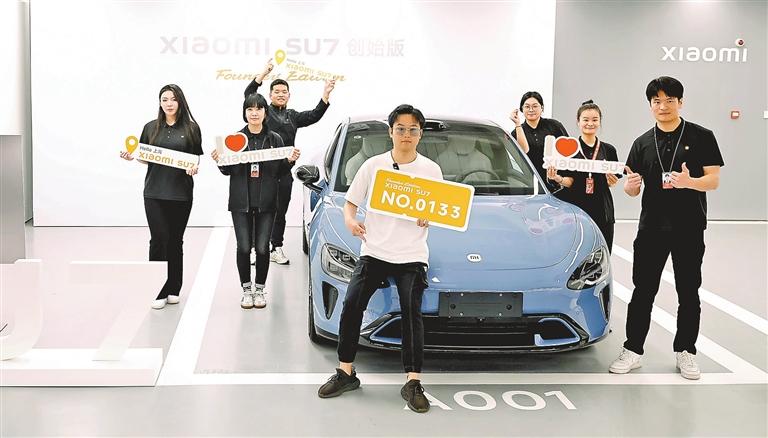
CHINESE smartphone maker Xiaomi on Wednesday reported higher-than-expected revenue for the second quarter, revealing for the first time its auto business unit’s contribution of 6.2 billion yuan (US$869.2 million). Its shares (HK$1810) rose 9.02% to HK$19.1 (US$2.45) each yesterday. For the three months ending in June, Xiaomi’s revenue rose 32% to 88.9 billion yuan, beating the 85.8 billion yuan estimated by analysts. Profits were up 38.3% year-on-year to 5.1 billion yuan, according to the company’s financial statement released after market close Wednesday. The company first announced its entry into the electric vehicle (EV) business in 2021 as a diversification from its core smartphone operations. Xiaomi delivered 27,307 SU7s in the three months through June, with the EV business generating a net loss of 1.8 billion yuan. However, the company said the business has a “healthy gross profit margin” of 15.4%, up from 12.6% in the first quarter which it attributed to higher than expected deliveries. In contrast, Tesla’s gross profit market was 13.9% in the same period, as per 36kr.com. Xiaomi president Lu Weibing said during an earnings press conference that the company’s monthly deliveries reached around 10,000 in June after ramping up capacity. Xiaomi launched the SU7 in March, when founder and CEO Lei Jun said the company would be selling the cars at a loss. The company’s aggressive pricing comes amid intensified competition and a saturated EV market. The business unit lost an average of 65,900 yuan per car delivered in the June quarter. Lu attributed the loss to Xiaomi’s limited EV market share and the high development cost of its first car. “Our (EV business) size remains relatively small and car manufacturing is a typical economies-of-scale manufacturing industry,” Lu said during the press conference. Lu added that the company aims to hit its annual EV delivery target of 100,000 SU7s by November and plans to expand its EV retail network to 100 centers by the end of the year, up from 87 locations in 30 cities in June. As of the end of July, Xiaomi had delivered about 35,688 SU7s. Xiaomi’s EV factory in Beijing started double shifts in June to crank up production to reach 120,000 units by the end of the year – the high end of its delivery target. As clients still need to wait at least 20 weeks for their new SU7 to be delivered, analysts said the company in the second half of 2024 may face competition from cheaper EVs from other automakers, such as XPeng’s MONO M03 and ONVO L60, a second brand from Nio. Xiaomi, which has been the third-largest smartphone maker globally for 16 consecutive quarters, saw handset shipments grow 28% in the June quarter to 42.2 million units. Smartphone revenue grew 27.1% year-on-year to 46.5 billion yuan for the period. Comparatively, the global shipment of smartphones in the second quarter grew 12% from a year earlier, according to the data from market analyst firm Canalys. In the first half, Xiaomi shipped a total of 83 million handsets, pulling in 93 billion yuan in revenue.(SD News) | 
